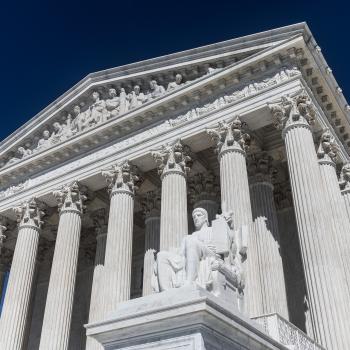We are in Geneva with Nora Stoddard and her colleague, the stunning Dr. Jody Easler. The pair are attending a meeting of the UN Committee on the Rights of the Child, led by chair Dr. Erzabet Kadar. Kadar has just opened the meeting with a rousing statement on the United States’ recent decision to ratify the U.N. Convention on the Rights of the Child. Kadar goes on:
“As the newest member of our committee, we have requested Dr. Jody Easler, the director of the National Commission on Children in the United States, to prepare an analysis of the alternative scenarios for immediate implementation.”
I flipped back a few pages to be sure, but no, I was not imagining things—on page 11, Jody introduced Nora to Erzabet Kadar as “our director of the National Commission on Children.” And now Kadar is introducing Jody as the director of the same agency.
Kadar goes on:
“Nora Stoddard, who is seated next to Dr. Easler, personally led the field team for the investigation that led up to this report. Dr. Easler holds the title of deputy secretary of state as well as the rank of ambassador here in Geneva, a position of considerable prestige that demonstrates the commitment of the new administration to the Convention.”
This is terrible writing. Even barring the confusion about who is actually the director of the National Commission on Children in the U.S., Kadar would not have to explain the ins and outs and implication of Jody’s position.
Speaking of Jody’s position, Deputy Secretary of State is not a throw-away title. According to what I dug up, there are only two deputy secretary of states (here and here). Both work very closely with the Secretary of State. There is no “holds the title of deputy secretary of state” (as Kadar states about Jody) without holding the role of deputy secretary of state, which would keep Jody pretty busy (and require her to do quite a bit of foreign policy) and definitely not allow her to focus only on children.
Regardless, Jody is now up.
“Good morning. On behalf of the United States, let me say how satisfying it is to bring you this report today. We appreciate the long-sufferings spirit that has been shown to us by your respective nations as we have labored through this period of regressive thinking.”
This is so overdone. So very overdone.
Easler’s bright eyes and contagious smile warmed something deep inside of each of the hardened bureaucrats, but on the surface they were taken aback because her manner differed so radically from the norm.
What even is this??
Jody nods to Nora, who then presents “four possible implementation plans.” Here’s where things get a bit odd—each country that signs onto the treaty implements the treaty themselves, internally. The committee makes recommendations, and non-governmental organizations can be involved in the implementation (particularly in areas like ensuring that children have access to medicine and healthcare and combatting the use of child soldiers), but the committee does not itself carry out the implementation of the treaty.
In Farris’ treatment, the committee does carry out the implementation of the treaty. In fact, Nora offers up four possible implementation plans, and (as we will see in a moment) the committee overrides Nora and Jody’s preference of plan to choose one they recommend against. This is absolutely not how this works.
After Nora introduces the first possible implementation plan—barring a 17-year-old California girl on trial for murder from being sentenced to death—Farris pauses to draw out a justification for his mangling of how all of this works:
A hand shot up from a man sitting at the far end of the table. He wore an identification tag that indicated he was from Belgium. “Can you please tell us,” he began in a pleasant French accent, “what provision of American law allows this legal implication from the treaty? How does the treaty have the ability to override local law? I know there is something, but it would help me follow your report if I could be refreshed on this point.”
“Certainly, Easler replied, smiling. “Our Constitution has a provision in Article VII called the Supremacy Clause. It says that the Constitution, laws passed under the authority of the Constitution, and treaties which have been ratified are the highest law of the land. Treaties always override the laws of our fifty states.”
If any of my readers have expertise in this area and can direct me to resources to read up on it a bit, I would appreciate that. As I understand it some of the issue is over whether or not such a treaty would be considered “self-executing.” Farris’ argument is that because the U.S. Constitution states that treaties that have been ratified are the highest law of the land, the U.S. Congress would not need to pass any law to implement anything in a treaty, even one relating to domestic policy such as this one.
We’ll likely get into this more later. For now, it is enough to know that Farris’s argument hinges on three claims relating to the signing of the U.N. Convention on the Rights of the Child:
- That the treaty would be self-executing and have the force of law.
- That the treaty would be enforceable by the U.N.
- That the U.N. would seek to directly regulate what religions are and are not allowed to teach children.
I am skeptical of the second and third of Farris’ claims at the very least.
One reason for my skepticism is that in discussing the Convention, Farris quickly veers away from reality, which makes me question his claims about how any of this works. Take his discussion of abortion, for instance. Ensuring minors’ access to abortion is the second possible route for enforcement of the treaty presented, this time presented by Jody, who forgets to cede the floor back to Nora after responding to the question about enforcement from the gentlemen from Belgium:
“Our second potential case would arise in Charlotte, North Carolina. Under state law, parents are required to consent to an abortion for their minor daughters. Now, of course, there is a provision that allows for the prospect of a judicial override. But under the treaty, even this possibility of an override is still an interference with the girl’s rights under the treaty. A minor’s right to reproductive freedom is absolute—as you know.”
The U.N. Convention on the Rights of the Child mentions neither abortion nor reproductive freedom. Even assuming that the treaty is self-executing—assuming that Congress would not have to pass any laws to enact it, that its provisions (such as its bar on imposing the death penalty or life imprisonment without the possibility of parole for crimes committed by minors) would immediately have the force of law—how the Convention would strike down parental consent laws when it does not mention abortion needs some explaining.
After Jody presents this second possible enforcement scenario—using Charlotte, North Carolina, as a test case to strike down limits on minors’ reproductive rights—this happens:
A woman sitting behind a nameplate that read “Hua Zhuang, People’s Republic of China” raised her hand.
Easler smiled and nodded. “Yes?”
“Would not your Supreme Court reach the same conclusion under your law and under the treaty? It seems that they have been entirely on the right side of this issue,” the Chinese woman asked.
What you see in the above exchange is Farris’ assumption that reproductive rights mean only the right to have an abortion, and not also the right not to have an abortion. After all, China’s one-child policy, still in force at this time, would have been a major damper on young people’s reproductive freedom. China, after all, is not exactly known as a champion of reproductive rights. This assumption is actually a common one on the Right—many conservatives think pro-choice means only pro-abortion, and that reproductive freedom means only access to abortion, and not also to services like prenatal care and affordable childcare.
Also! Many European countries (including Western European and Scandinavian countries) have similar laws regulating abortion access by minors (including laws requiring parental consent subject to judicial override), and these laws were in force when Farris wrote this book. Kadar is from Hungary. Hungary required parental consent for a minor under 18 to obtain an abortion.
While I was unable to find the law regarding minors’ access to abortions in China, I did find that hospitals in Hong Kong typically require parental consent before providing abortion services for a minor. Further, numerous countries that ban abortion completely (Ireland, Chile, Nigeria, the Philippines) have signed the Convention. Jody states that “a minor’s right to reproductive freedom is absolute—as you know” to an audience that likely includes some people from countries where abortion may still be banned.
Confused as to how Farris could think that the Convention would have any impact at all on our abortion law vis a vis minors, given that other signatory countries’ have similar policies to ours, I did some poking around and I think I know what is going on.
I found a Congressional Research Service policy brief on the U.N. Convention on the Rights of the Child, and it includes this brief section on abortion rights:
There is significant debate regarding what impact, if any, U.S. ratification of CRC might have on domestic abortion policy. The ambiguous nature of some CRC provisions relating to these issues has left the door open for broad interpretation by both opponents and supporters of the Convention.
Critics of U.S. ratification have raised questions regarding the Convention’s possible impact on state parental notification laws for children undergoing abortion. In particular, they are concerned about Article 16(1), which states, “No child shall be subjected to arbitrary or unlawful interference with his or her privacy, family, home, or correspondence…. ” Some fear that this “right to privacy” could ultimately allow children to choose to have abortions without notifying or receiving guidance from their parents. Opponents of the Convention express concern with CRC Committee decisions that appear to criticize countries that restrict abortion. Additionally, some have argued that Article (24)(2)(d) of CRC, which states that States Parties “shall … take appropriate measures … to ensure appropriate pre-natal and post-natal health care for mothers,” could be interpreted to mean that children may undergo abortions without parental notification.
Supporters of the Convention contend that the treaty does not take a position on abortion or when a child’s life begins. They maintain that the Convention text allows individual countries to interpret the treaty in a way that aligns with their national abortion policies. They note that countries with strict anti-abortion laws, such as the Holy See (Vatican), the Philippines, and Ireland, have ratified the Convention. Proponents counter claims that the Convention encourages abortion by citing CRC Committee statements that appear to criticize countries for their high rates of abortion and teen pregnancy. In its report on Russia in 1993, for instance, the Committee expressed concern with “frequent recourse to abortion as what appears to be a method of family planning.”
In other words, the concern vis a vis abortion is not that the U.N. Committee on the Rights of the Child would step in and dictate U.S. policy but rather that courts within the U.S. might interpret the Convention’s endorsement of minors’ right to be free from “arbitrary or unlawful interference with his or her privacy” to strike down parental consent laws, given the strong connection between right to privacy and right to abortion in U.S. jurisprudence.
This concern actually has some amount of logical consistency. It explains how concern that the Convention could lead to striking down parental consent laws could exist in a world where numerous other treaty signers, including many of those in Europe, themselves have parental consent laws. But U.S. courts interpreting the treaty and its meaning in the context of U.S. law is not scary enough for Farris. He needs an international threat—the U.N. sticking its nose in Americans’ business and dictating our law from Geneva.
This entire scene—where Jody proposes using the Convention to strike down U.S. parental consent laws, to a committee chaired by a woman from a country with similar parental consent laws—is a work of blatant fiction. If signing the Convention did lead to striking down these laws, it would do so internally, working its way through U.S. courts, and not through the efforts of any U.N. committee.
And yet, Jody responds to the Chinese representative by stating that “even though we expect more pro-choice justices under the new administration, we cannot estimate how long it will be until the vacancies occur,” and that this means that “it is only the Children’s Treaty that will guarantee the result we would want”—i.e. the striking down of parental consent laws.
Farris, in other words, contrasts two distinct and separate options: first, U.S. courts striking down parental consent laws, something he says would require more pro-choice justices; and second, using the Convention to strike down these laws directly.
This is strange, because the Convention, in book-world, has already been signed. Ostensibly, U.S. courts would now examine parental consent laws in light of the Convention, which is how critics of the Convention (according to the Congressional Research Service) suggest that it would would result in striking down these laws. Yet Farris does not even allude to this being a possibility.
Not only does Farris drag a manipulative international committee into his story, he also discounts the one way critics say the Convention could realistically lead to the striking down of parental consent laws. In fact, Farris doesn’t even have Jody consider whether courts’ interpretations of parental consent laws may change now that the treaty has been ratified. Instead, she states that overturning such laws would require more pro-choice justices, without any recognition that the treaty could have changed things.
The Committee would not need to take any action at all for Planned Parenthood or some other entity to sue a state’s parental consent laws, using legal arguments augmented by clauses from the U.N. Convention on the Rights of the Child. In fact, if and when the U.S. does ratify the Convention, this seems like the most likely outcome—entities within the U.S. suing to force the U.S. government to, say, put more money into schools, or into its child welfare system, or into alleviating child poverty.
I should mention that while I find the mechanism of U.S. courts striking down parental consent laws in light of the Conventions’ endorsement of minors’ right to privacy at least logically consistent, I still don’t think it would happen. The fact that many other countries have ratified the treaty and yet have parental consent laws suggest that the outcome would be uncertain at best. I see no reason to think that the courts would find parental consent laws an “arbitrary or unlawful interference” in a child’s privacy.
We’ll save the last two options Nora and Jody present the committee for next week. The only remaining thing I should note is that in Roper v. Simmons (2005), three years after this book was published, the Supreme Court struck down the death penalty for crimes committed by minors. The decision turned primarily on changing domestic opinions on what constituted “cruel and unusual punishment.” Farris was, to say the least, highly displeased.
I have a Patreon! Please support my writing!










